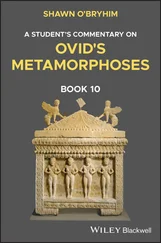Ovid - Fasti
Здесь есть возможность читать онлайн «Ovid - Fasti» — ознакомительный отрывок электронной книги совершенно бесплатно, а после прочтения отрывка купить полную версию. В некоторых случаях можно слушать аудио, скачать через торрент в формате fb2 и присутствует краткое содержание. Жанр: foreign_poetry, Поэзия, foreign_antique, foreign_prose, на латинском языке. Описание произведения, (предисловие) а так же отзывы посетителей доступны на портале библиотеки ЛибКат.
- Название:Fasti
- Автор:
- Жанр:
- Год:неизвестен
- ISBN:нет данных
- Рейтинг книги:3 / 5. Голосов: 1
-
Избранное:Добавить в избранное
- Отзывы:
-
Ваша оценка:
- 60
- 1
- 2
- 3
- 4
- 5
Fasti: краткое содержание, описание и аннотация
Предлагаем к чтению аннотацию, описание, краткое содержание или предисловие (зависит от того, что написал сам автор книги «Fasti»). Если вы не нашли необходимую информацию о книге — напишите в комментариях, мы постараемся отыскать её.
Fasti — читать онлайн ознакомительный отрывок
Ниже представлен текст книги, разбитый по страницам. Система сохранения места последней прочитанной страницы, позволяет с удобством читать онлайн бесплатно книгу «Fasti», без необходимости каждый раз заново искать на чём Вы остановились. Поставьте закладку, и сможете в любой момент перейти на страницу, на которой закончили чтение.
Интервал:
Закладка:
These are mere presumptions; a nearer approach can be made to certainty. There was nothing the ancient inhabitants of Italy more carefully shunned, than drawing down the vengeance of the gods, by even an involuntary breach of faith. It was also the custom, especially of the Etruscans, to make peaces under the form of truces, for a certain number of years. Now we find that, in the year 280, a peace was made with Veii for 40 years. In 316 Fidenas revolted and joined Veii, which must then have been at war with Rome, but 316-280, is only 36, yet the Romans, though highly indignant, did not accuse the Veientines of breach of faith. Suppose the truce made for 40 ten-month years, and it had expired in the year 314. Again, in 329, a truce was made for twenty years, and Livy says that it was expired in 347, but 347-329 is 18 not 20. Let the year have been, of ten months, and the truce had ended in the year 346. These are Etruscan cases, but we find the same mode of proceeding in transactions with other nations; a truce for 8 years was made with the Volscians in 323, and in 331 they were at war with Rome, without being charged with perjury.
This ten-month year was that of the Etruscans who were the most learned and cultivated people of the peninsula. As the civil years of the Latin and other peoples were formed on various principles, and differed in length, the Romans at least, if not the others, deemed it expedient to use, in matters of importance, a common fixed measure of time. On all points relating to science and religion they looked up to the Etruscans; it was, therefore, a matter of course that their year should be the one adopted.
This Etruscan year consisted of 304 days, divided into 38 weeks of eight days each. It is not absolutely certain that it was also divided into months, but all analogy is in favour of such a division. Macrobius and Solinus say, that it contained six months of 31, and four of 30 days, but this does not seem to agree with weeks of eight days; perhaps there were nine months of four weeks and one of two, or more probably eight of four weeks and two of three. 2 2 See the Cambridge Philological Museum, No. V. p, 474.
This year, which depended on neither the sun nor the moon, was a purely scientific one, founded on astronomical grounds and the accurate measurement of a long portion of time. It served the Etruscans as a correction of their civil lunar year, the one which was in common use, and, from the computations which have been made, it appears that, by means of it, it may be ascertained that the Etruscans had determined the exact length of the tropical or solar year, with a greater degree of accuracy than is to be found in the Julian computation.
Like the Etruscans, the Romans employed for civil purposes a lunar year, which they had probably borrowed also from that people. This year, which, of course, like every year of the kind, must have consisted of twelve months, fell short of the solar year by the space of 11 days and 6 hours, and the mode adopted for bringing them into accordance was to intercalate, as it was termed, a month in every other year, during periods of 22 years, these intercalated months consisting alternately of 22 and 23 days. This month was named Mercedonius. In the last biennium of the period no intercalation took place. As five years made a lustre, so five of these periods made a secle, which thus consisted of 110 years or 22 lustres, and was the largest measure of time among the Romans. 3 3 Certus undenos decies per annos Orbis ut cantus referatque ludos. HORACE CAR. SEC. 21.
The care of intercalating lay with the pontiffs, and they lengthened and shortened the year at their pleasure, in order to serve or injure the consuls and farmers of the revenue, according as they were hostile or friendly toward them. In consequence of this, Julius Caesar found the year 67 days in advance of the true time, when he undertook to correct it by the aid of foreign science. From his time the civil year of the Romans was a solar, not a lunar one, 4 4 It is for this reason that in my note on I. 1, I have called the Latin year a solar one, for such it was when Ovid wrote.
and the Julian year continued in use till the Gregorian reformation of the Calendar.
We thus see that the civil year of the Romans always consisted of twelve months, and that a year of ten months was in use along with it in the early centuries of the state, which served to correct it, and which was used in matters of importance. 5 5 On the subjects treated of in this section, see Niebuhr on the Secular Cycle, in his History of Rome, and Scaliger de Emendatione Temporum.
§ 3.
Of the Months and Days of the Roman Year .
When it was believed that the year of 304 days was the original civil year of the Romans, and evidence remained to prove that the commencement of the year had, in former times, been regulated by the vernal equinox, instead of the winter solstice, it seemed to follow, of course, that the original year of Romulus had consisted of but ten months. The inconvenience of this mode of dividing time must have been thought to have appeared very early, since we find the introduction of the lunar year of twelve months ascribed to Numa, who is said to have added two months to the Romulian year, which, it would thus appear, was regarded as having been a year of ten lunar months. This placing of the lunar twelve-month year in the mythic age of Rome, I may observe, tends to confirm the opinion of its having been in use from the origin of the city.
The ancient Israelites had two kinds of year, a religious and a civil one, which commenced at different seasons. Their months also originally, we are told, proceeded numerically, but afterwards got proper names. As the month Abib is mentioned by name in the book of Deuteronomy, I hazard a conjecture, that the civil and religious years had coexisted from the time of Moses, and that the months of the former had had proper names, while those of the latter proceeded numerically. Is there any great improbability in supposing the same to have been the case at Rome? The religious year of ten months, as being least used, may have proceeded with numerical appellations from its first month to December, while the months of the civil year had each their peculiar appellation derived from the name of a deity, or of a festival. It is remarkable that the first six months of the year alone have proper names; but the remaining ones may have had them also, though, from causes which we are unable to explain, they have gone out of use, and those of the cyclic year have been employed in their stead. 6 6 That this is by no means improbable is evident from the circumstance, that the name of the intercalary month, Mercedonius, is to be found in no Latin writer. It would be unknown to us, if Plutarch had not chanced to mention it.
The oriental division of time into weeks of seven days, though resulting so naturally from the phases of the moon, was not known at Rome till the time of the emperors. The Etruscan year, as we have seen, consisted of weeks of eight days, and in the Roman custom of holding markets on the nundines , or every ninth day, we see traces of its former use, but a different mode of dividing the month seems to have early begun to prevail.
In the Roman month there were three days with peculiar names, from their places with relation to which the other days were denominated. These were the Kalends ( Kalendae or Calendae ,) the Nones, ( Nonae ) and the Ides ( Idus or Eidus ). The Kalends (from calare , to proclaim,) were the first day of the month; the Nones (from nonus , ninth) were the ninth day before the Ides reckoning inclusively; the Ides, (from iduare, to divide,) fell about, not exactly on, the middle of the months. In March, May, July and October, the Ides were the 15th, and, consequently, the Nones the 7th day of the month; in the remaining months the Ides were the 13th, the Nones the 5th. The space, therefore, between the Nones and Ides was always the same, those between the Kalends and Nones, and the Ides and Kalends, were subject to variation. Originally, however, it would appear, the latter space also was fixed, and there were in every month, except February, 10 days from the Ides to the Kalends, The months, therefore, consisted of 31 and 29 days, February having 28. In the Julian Calendar, January, August and December were raised from 29 to 31 days, while their Nones and Ides remained unchanged. It was only necessary then to know how many days there were between the Kalends and Nones, as the remaining portions were constant. Accordingly, on the day of new moon, the pontiff cried aloud Calo Jana novella 7 7 Jana was the moon, and from Dea Jana (pronounced Yana ), was made Diana.
five times or seven times, and thus intimated the day of the Nones, which was quite sufficient for the people.
Интервал:
Закладка:
Похожие книги на «Fasti»
Представляем Вашему вниманию похожие книги на «Fasti» списком для выбора. Мы отобрали схожую по названию и смыслу литературу в надежде предоставить читателям больше вариантов отыскать новые, интересные, ещё непрочитанные произведения.
Обсуждение, отзывы о книге «Fasti» и просто собственные мнения читателей. Оставьте ваши комментарии, напишите, что Вы думаете о произведении, его смысле или главных героях. Укажите что конкретно понравилось, а что нет, и почему Вы так считаете.












